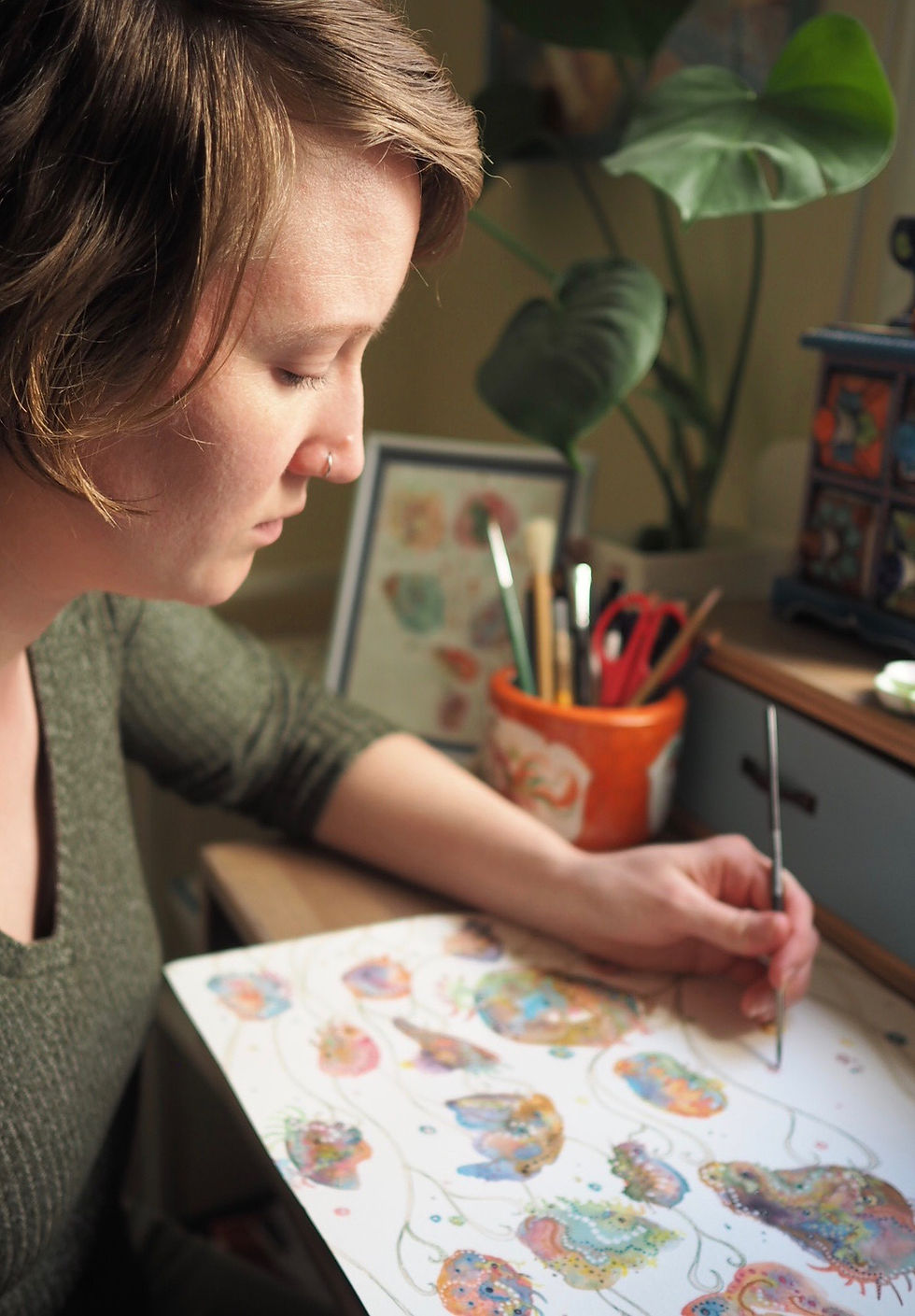Destination: Hong Kong's Lunar New Year
- Miriam Rowe

- Jan 16, 2023
- 4 min read
Updated: Feb 14, 2023
Happy Year of the Rabbit! How much do you know about Lunar New Year? It's time to dive in to some of the traditions of this holiday, celebrated by billions of people around the world.
First off, is there a difference between "Lunar New Year" and "Chinese New Year"? Yes! While China does celebrate the lunar new year holiday (whose dates change every year), many other countries that are not Chinese also celebrate the same holiday- so "Lunar New Year" is a more general term for celebrations across many countries- including Taiwan, Hong Kong, Vietnam ("Tet"), South Korea ("Seollal"), Japan, Singapore, Malaysia, and China. Although there are some cultures, like Mongolian, where the Lunar New Year is calculated slightly differently and sometimes falls on different dates, I'm going to use it as a general term for the rest of this article, and the design I made focuses on symbols and script used in Hong Kong, since I lived there for 7 years.
Each New Year has a different animal to represent it-- in the Chinese zodiac, there are a total of 12 animals that cycle; this year's Rabbit. There is also a cycle of 5 elements that are combined with this: Wood, Earth, Fire, Metal, and Water. This year, the Water Rabbit signifies patience, peace, prosperity, and good luck with finances (sounds excellent, right?!)
In this pattern I used a flowing calligraphy style to represent Water. Not only do Rabbits show patience and peace, but the Rabbits I know in my life are often curious and inquisitive, too, so I built those traits into my bunny.
The Chinese calligraphy I used is "大桔大利" a New Year greeting that means "Good luck, and may things go smoothly". The reason I chose this greeting is that the second character 桔 means "luck" but also means "tangerine" - which is a lucky symbol.
Are you sensing a theme? Symbolism is a HUGE part of the Lunar New Year celebrations.
The tree has 8 tangerines on it, which is also a lucky number because it sounds like the Cantonese word for "prosperity". The brushy plant underneath the Rabbit is pussywillow, which symbolizes growth and abundance.
I remember the chaos of the Prince Edward Flower Market in Hong Kong-- the several blocks it occupied were always at peak occupation in the lead-up to the Lunar New Year festival. Lucky symbols and meanings are considered, and every stall spills out onto the street with its finest specimens- ready to decorate the homes of the millions who live there.
While food is always important in the Hong Kong culture, there is no time of the year that kitchens are busier. People spend days preparing their favorite dishes and readying traditional lucky foods to eat at certain times during the festivities.
Cooking together can be a great family bonding activity, and for those who prefer to dine out, huge family banquets are also popular.
Many foods that are considered lucky for the Lunar New Year tend to earn this honor because their names sound like other words:
Glutinous Rice Balls, tong yuen, sounds like "to be reunited" - which is perfect for all the family gatherings that take place during this time!
Fried turnip cakes are also a staple, hearkening back to the Hokkien language, where "radish" is pronounced in the same as "good luck"
Poon Choi is a very traditional dish that originates in the village area of Yuen Long, and is my absolute favorite feast to share-- a massive, festive cauldron filled with layers of vegetables, meat, and seafood.
The most famous symbol of celebration internationally must be the Mooncake. Though traditionally made with a semi-sweet lotus paste wrapped around a very hard boiled egg yolk before being encased in a stamped pastry, many modern versions have become popular in recent times, and many of these modern versions are a bit more appealing to a Western palate.
Designer bakeries and luxury hotels all offer their own branded versions, but one of my favorites is the Ice Cream Sandwich version from Haagen-Dasz... I know, I'm such a gwei mui ("ghost girl" / foreigner).
For many kids (and probably many unmarried adults, too) a favorite part of the holiday is the lai see , or "red packets" that contain crisp, brand-new bills. Married adults are expected to carry stacks of these lai see around, and to give one to their family, friends, and acquaintances when they are greeted with a New Years wish.
There is a lot of ceremony and etiquette that goes into The Dance of the Lai See, and if you want to learn more about it, you can check out this article (just keep in mind that the dollar amounts are in Hong Kong Dollars, not US Dollars- otherwise, you'll be in for a shock!)
Did you know that the Lunar New Year holiday is the world's largest migration event every year (except for the Covid years)?
It's traditional for everyone to return to their hometown, where huge reunions of family, extended family, and old family friends occur. However, as someone who has lived outside of my home country for 15 years, I often think about those who aren't able to go home for the holidays.
Migrant workers, healthcare and other essential workers, students and those who live abroad... many find ways to create and celebrate new traditions depending on their circumstances-- but family, food, lucky symbols, and the collective hope of a prosperous New Year are there for all. Kung Hei Fat Choi!












Comments